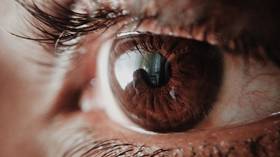Scientists on verge of creating ‘artificial vision’ which could restore partial sight in the blind via BRAIN IMPLANTS

Researchers at the Netherlands Institute for Neuroscience (NIN) have achieved a major breakthrough which could soon lead to partial restoration of sight in blind people using a brain implant that stimulates their optical cortex.
The team’s findings were published in Science on December 3, and detail experiments involving two sighted monkeys with high-resolution implants in their visual cortices.
The idea has been explored since the 1970s, but current systems can only manage a resolution of a small number of artificial ‘pixels’ in the minds’ of the participants.
The NIN team, led by Pieter Roelfsema, capitalized on recent innovations in implant production and microelectronics, as well new cutting-edge materials science, to achieve what they claim is a hitherto unheard of level of artificial vision.
“The number of electrodes that we have implanted in the visual cortex, and the number of artificial pixels that we can generate to produce high-resolution artificial images, is unprecedented,” Roelfsema said.
Also on rt.com Scientists develop ‘artificial retina’ in hope to restore sight to the blindThe team developed high-resolution brain implants, which bypass the retinas and optical nerves, consisting of 1,024 electrodes which can recognize artificially induced shapes and percepts.
Electrical stimulation via the implanted electrode can trigger the perception of a dot of light in a given location in physical space in front of the user, in this case, the two monkeys.
The monkeys were then tested to measure their eye movements in response to electrical stimuli from a single electrode, in which they would point out the locations of phosphenes (a luminous image typically produced by stimulating the retina) with their gaze.
Next, the animals were tasked with tracking moving phosphenes, generated via a sequence of electrodes, before moving on to letter and shape selection tasks of increasing complexity and difficulty.
Also on rt.com ‘Impossible’ breakthrough sees scientists successfully regrow optic nerve cellsThe monkeys were successful in identifying induced lines, moving dots, and letters using their artificial vision.
The system shows major promise for “blind people who have suffered injury or degeneration of the retina, eye, or optic nerve, but whose visual cortex remains intact,” researcher Xing Chen explained.
The NIN team claims it is a major stepping stone towards a neuroprosthetic device which could one day restore functional vision to the blind, allowing for everything from object recognition to navigation of unfamiliar surroundings, affording an entirely new degree of independence and self-sufficiency to the blind.
Like this story? Share it with a friend!














